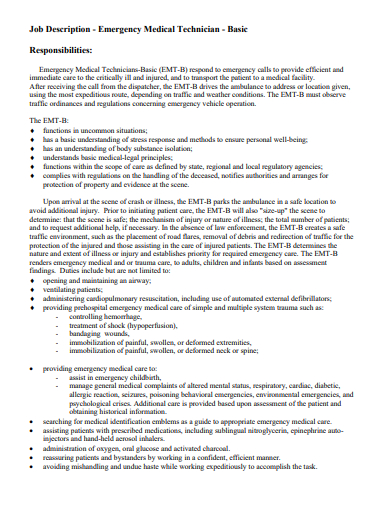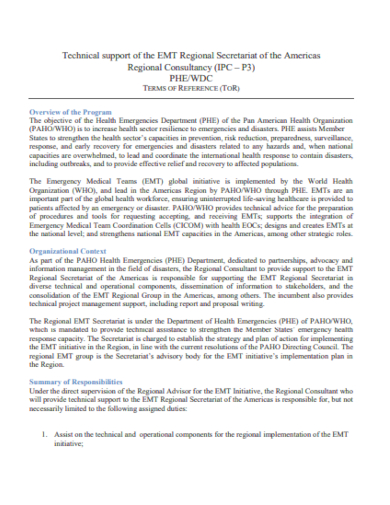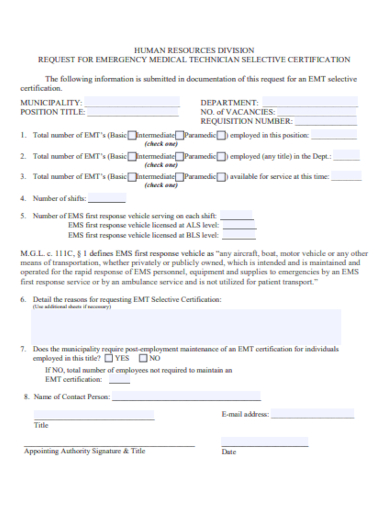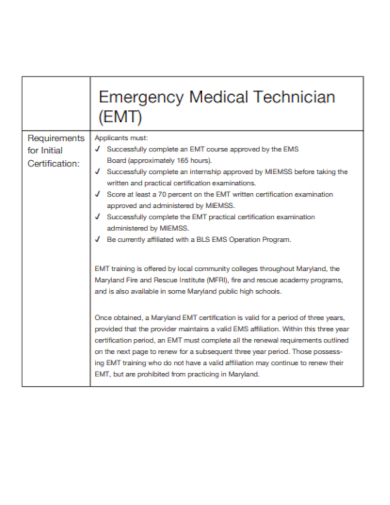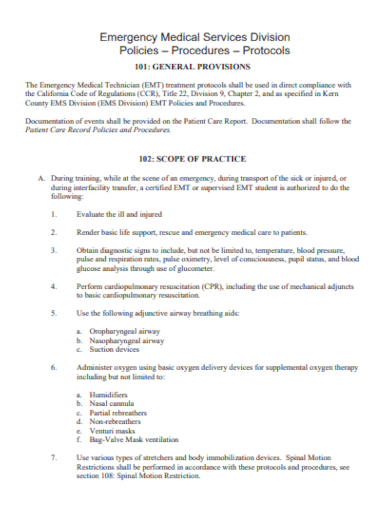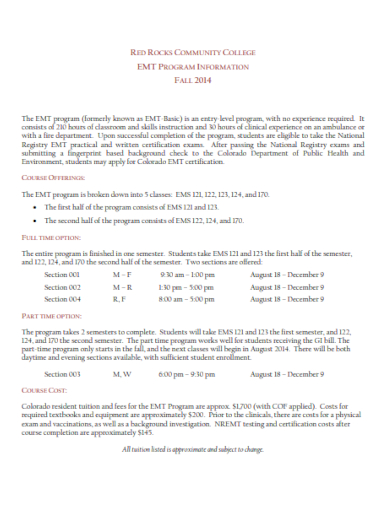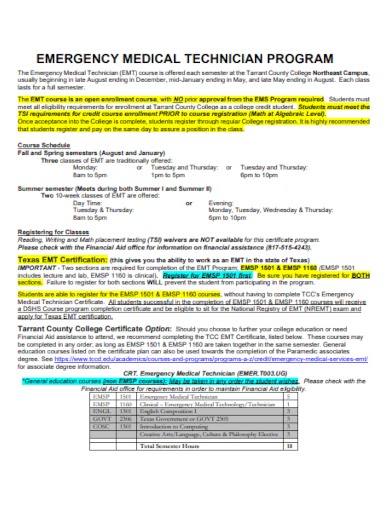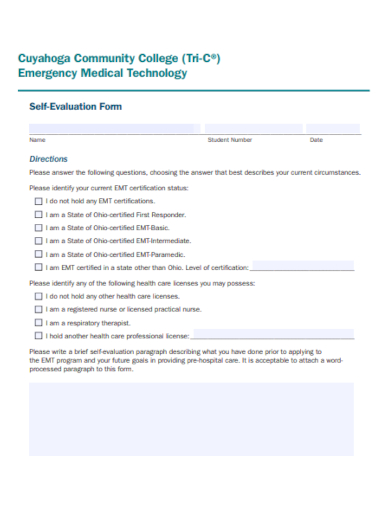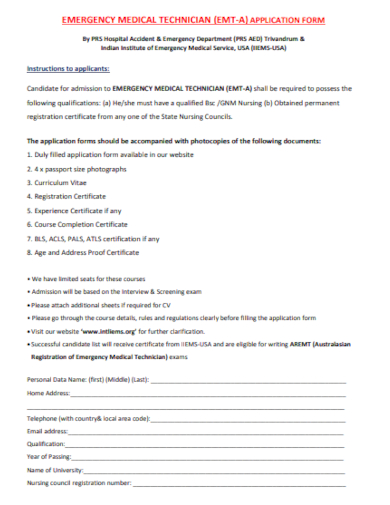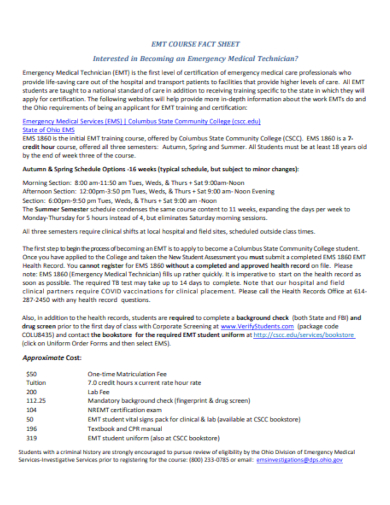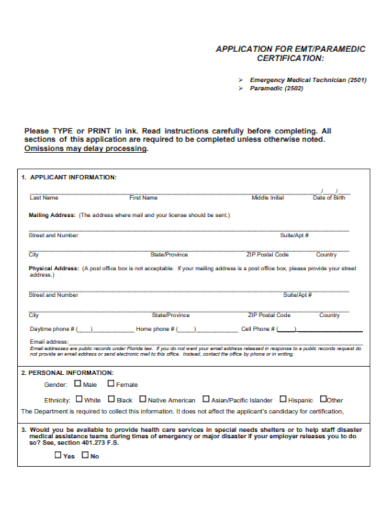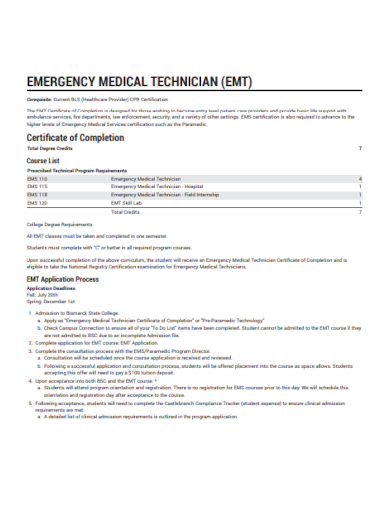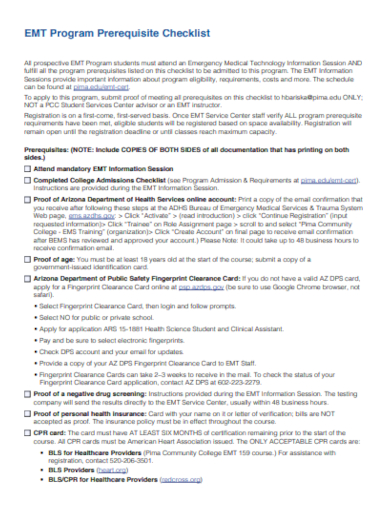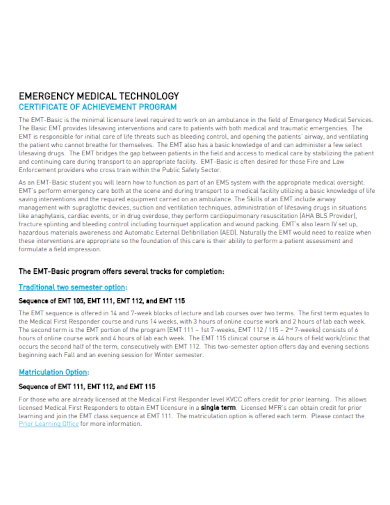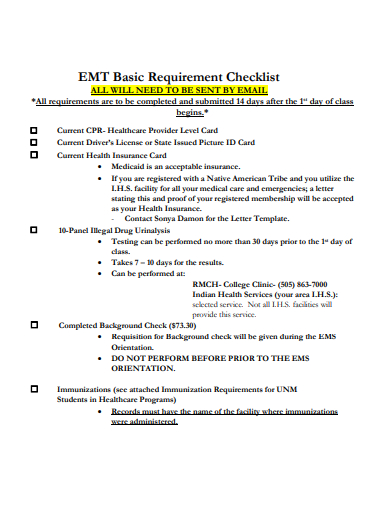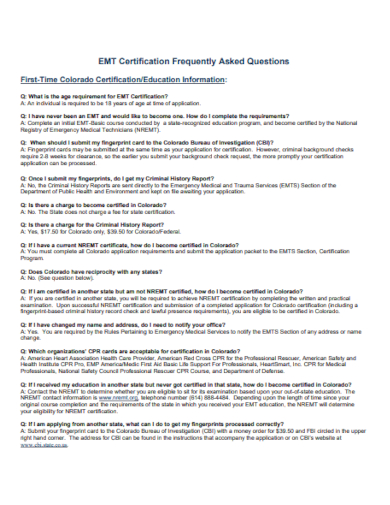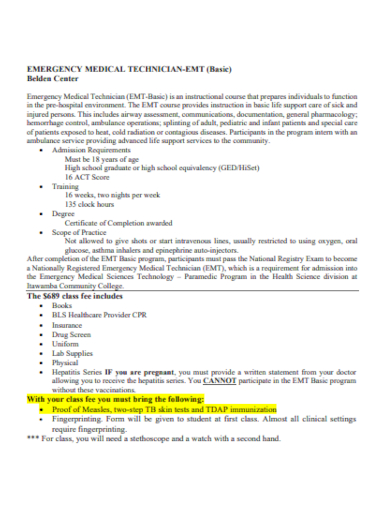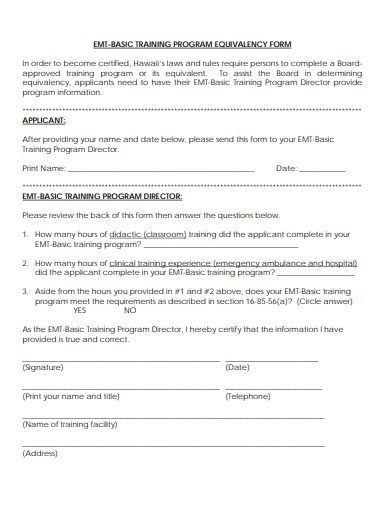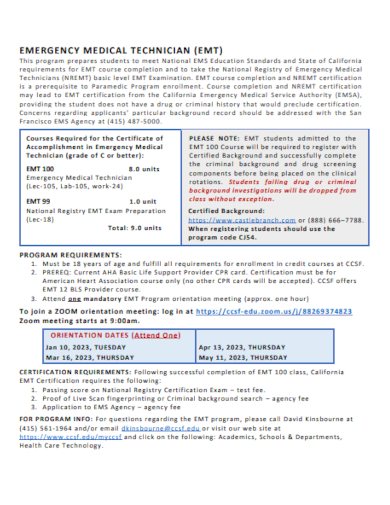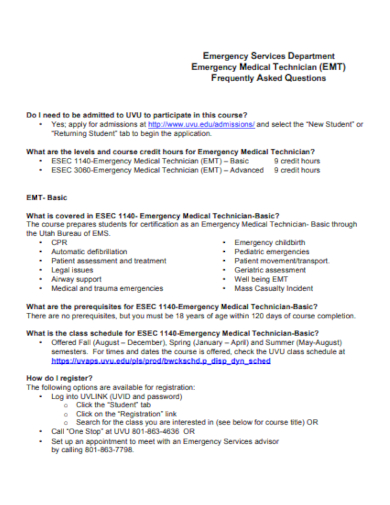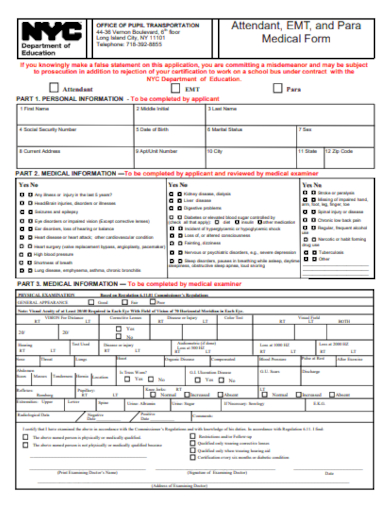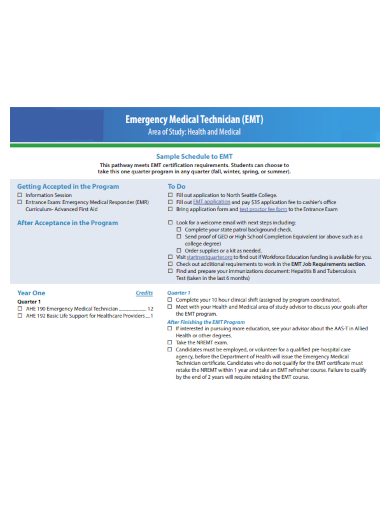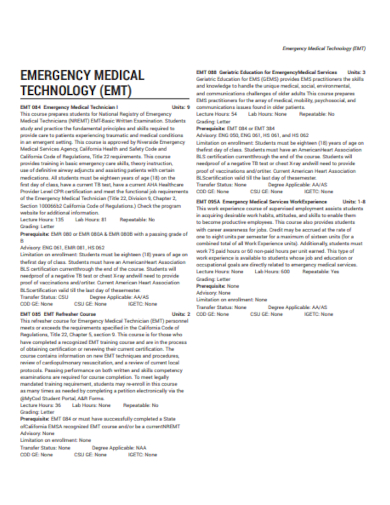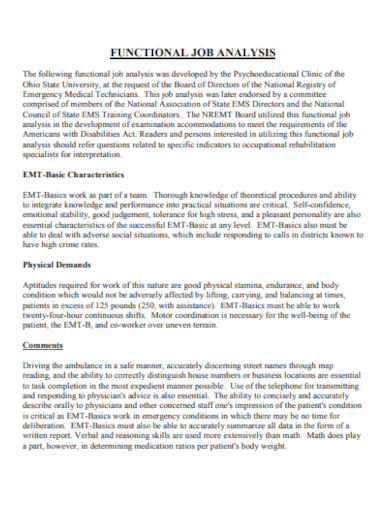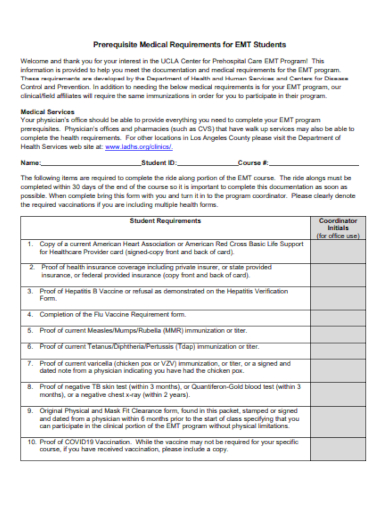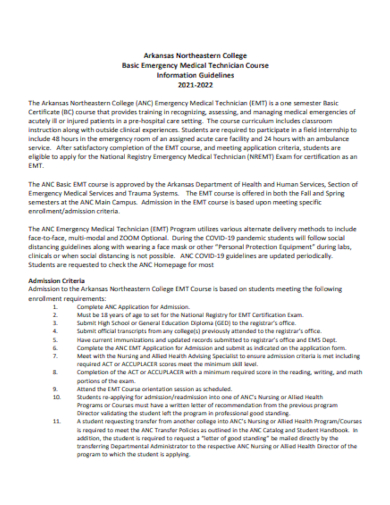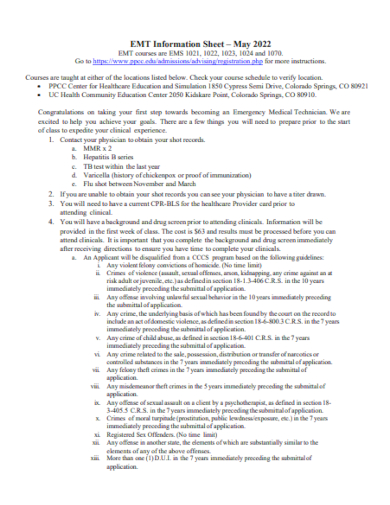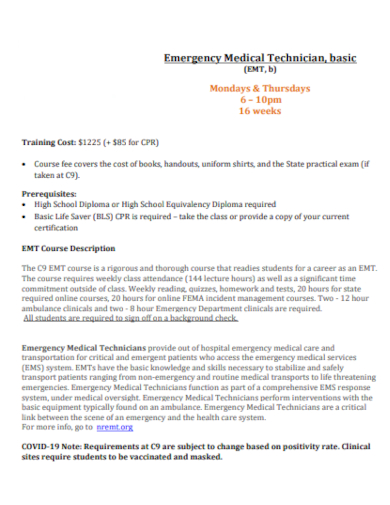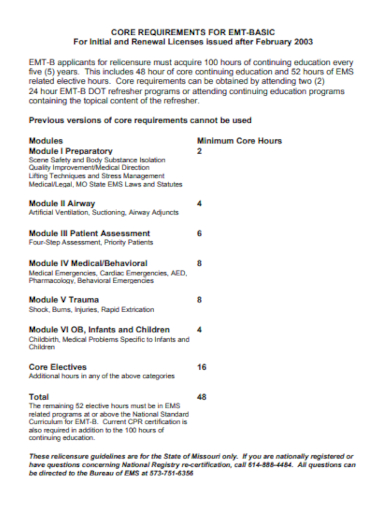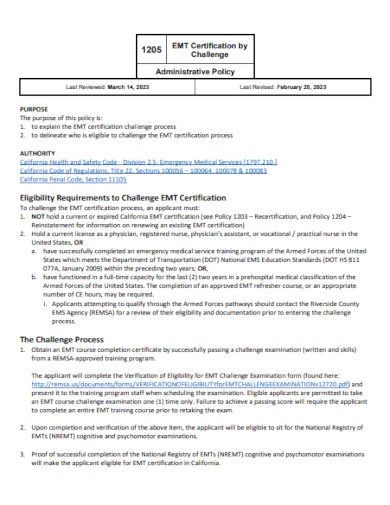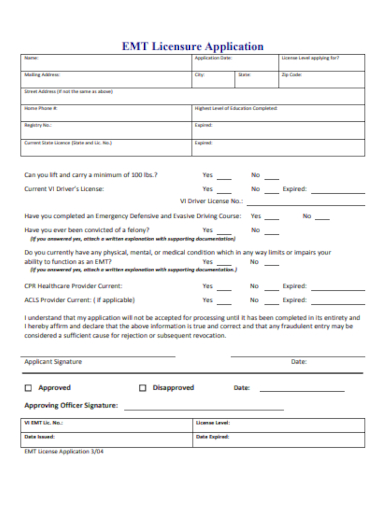One of the professions in the medical career that you might want to consider is the Emergency Medical Technician or EMT. This healthcare profession involves the provision of immediate assistance to patients during transport or emergencies. EMTs often work on ambulances while helping in getting people to the nearest hospital. These specialists can also work with the fire department and air rescue teams as well as private ambulance services. Healthcare providers use templates for more efficient work such as medical timelines, crisis management plan templates, medical checklists, injury incident reports, and attendance rosters.
30+ EMT Samples
1. Emergency Medical Technician Responsibilities
2. Technical Support EMT
3. Request for EMT
4. EMT Requirements
5. EMT Policy
6. EMT Program
7. Emergency Medical Technician Program
8. EMT Evaluation Form
9. EMT Application Form
10. EMT Course Fact Sheet
11. Application for EMT Certification
12. EMT Certificate of Completion
13. EMT Program Prerequisite Checklist
14. EMT Achievement Program
15. EMT Basic Requirement Checklist
16. EMT Certification FAQ
17. Basic EMT Template
18. EMT Training Program Form
19. Sample EMT
20. EMT Services FAQ
21. EMT Medical Form
22. EMT Schedule
23. Standard EMT
24. EMT Functional Job Analysis
25. Medical Requirements for EMT Student
26. EMT Information Guidelines
27. EMT Information Sheet
28. Simple EMT Template
29. Core Requirements for EMT
30. EMT Administrative Policy
31. EMT Licensure Application
What is an EMT?
An EMT or emergency medical technician refers to the first responders who are trained in basic medical skills and knowledge to deliver immediate medical assistance to patients during emergencies, both on-site and inside ambulances during transportation to the hospital. Unlike paramedics who commonly perform more invasive procedures, EMTs are emergency medical professionals who are not allowed to use treatment that breaks the patient’s skin.
How to Become an EMT
EMTs are the first responders to provide emergency services on the scene of a particular crisis like accidents, medical emergencies, and fire or natural disasters. They are responsible for delivering and performing basic and immediate medical care to stabilize a patient. Therefore, you must undergo specialized training and educational programs before you send your staff application or job application cover letter to become a certified EMT.
Step 1: Acquire Basic Education Requirements
Most employers require potential EMTs to at least have a GED certificate or high school diploma. EMTs can also choose to complete more advanced training or finish a two-year degree to further their education and careers. These medical practitioners must also have driver’s licenses with clean driving records.
Step 2: Get a Certification in CPR
Training programs for EMTs commonly require the practitioners to have a current Cardiopulmonary Resuscitation certification. This program teaches them how to perform proper CPR as a team of one or two-person.
Step 3: Accomplish an EMT Program and Pass the Cognitive Exam
After getting your CPR certification, you now have to finish an accredited program that provides in-depth training and education in emergency medical care and technologies. Once you completed your EMT program, you now have to complete a cognitive exam.
Step 4: Pass the Psychomotor Exam
Make sure to pass an EMT psychomotor exam that is offered by the local training organizations or emergency medical offices in your state. Once you have completed these programs and training, you can apply and get a job as an EMT in your state.
FAQs
What are the responsibilities of an EMT?
The roles and responsibilities of an EMT include performing first aid tasks, serving as liaisons, helping with crowd control in emergency scenes, driving medical vehicles, deciding where to take their patients, assisting other medical professionals, and attending training sessions and meetings.
What are the skills that an EMT must have?
EMTs need different skills to perform efficiently such as quick thinking skills, problem-solving skills, communication skills, composure under pressure, and physical endurance to perform long working hours.
What are the different types of EMTs?
The different types of EMT careers you can take are the EMT basic, EMT intermediate, and EMT paramedic.
An emergency medical technician or EMT is the first responder during emergencies who is trained to provide immediate medical assistance to patients, on-site or during their transportation to hospitals. These medical specialists operate out of ambulances and are instructed during emergencies by an emergency dispatcher. EMTs document the progress of their patient to provide a written record of their assessment that could help create their treatment plan and healthcare plan.
Related Posts
Teacher Lesson Plan
Deed of Assignment
Contract Termination Letter
Student Research Proposal
Diet Plan
Housekeeping Resume
Marriage Proposal Letter
Nursing Resume
Fund Transfer Letter
Purchase Order Cancellation Letter
Certificate of Service
Employee Leave Form
Visitors Log
Requisition Form
Student Feedback Form

